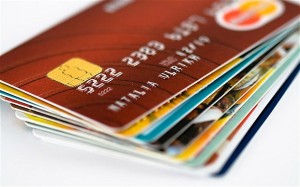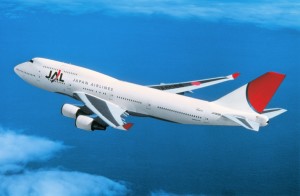Multiple store chains in the UK have decided to increase the size of their display mannequins in order to more accurately represent the average sized British woman. The choice to steer away from the norm of “size zero” model mannequins is a point of differentiation that these stores will have over their competition. If the average consumer is a size fourteen and happens to walk by Debenham’s display case that contains the larger mannequins, then comparatively the store will draw the shoppers attention; this differentiation could lead consumers into this store merely due to intrigue. Additionally, the average British woman will be able to identify better with the larger sized mannequin seeing as it closer resembles the size of that consumer. Allowing the consumer to affiliate with the mannequins can directly correlate with sales increase– seeing that ultimate goal for most shoppers is to increase their self-confidence through materialistic purchases. If consumers can better relate with the average sized mannequins, than they will likely feel better about themselves and be more inclined to purchase clothes from that specific store: ultimately, increasing that store’s profit. Debenham’s is taking full advantage of this, and are therefore benefiting by making their consumers feel more comfortable with themselves.
Monthly Archives: November 2013
Tom’s Aims to Expand Social Enterprise
It is well known that Tom’s company has always put a great emphasis on social enterprise; however, as of recent the company has taken this valuable concern and expanded it towards companies abroad. Tom’s is going to launch a website that will act as a “social hub” for companies that positively contribute to communities worldwide. Tom’s has strategically made the website debut date in the beginning of December in order to attract the seasonal Christmas shoppers who are already in the giving spirit. The website will group together around 200 companies that Tom’s has specifically approved of into an easy-to-access online shopping site. Consumers will be able to make their purchases and know that every purchase will play a helping hand in the lives of an individual somewhere in the world. The target consumer base that Tom’s is aiming to attract is individuals who are looking to make purchases with a greater purpose than simply obtaining a good. The website gives consumers a way to do well for other’s while doing treating themselves. Tom’s plans on putting up billboards and commercials with the slogan “This is bigger than us,” in order to promote the website.
Commentary on “All-in-One Credit Card”
After having read Huiyin’s blog post regarding the development of credit card that has the ability to hold both debit and credit cards, I was intrigued by Coin’s proposal. Huiyin focused on how Coin’s company would get a market share in the preexisting market that is primarily controlled by Visa, MasterCard, and ATM machines; however, I believe that the evident point of differentiation that Coin’s posses (being that the card is “all-in-one”) separates itself from its competitors, almost making a market of its own. Coin’s has used innovation and people’s natural tendency to favor convenience as a value proposition that the existing business do not posses. This added value of using an entirely new material in order to increase card capacity is something Coin’s can apply to all payment methods that consumer’s use, not only credit and debt cards; for example, Coin’s could expand their consumer segment by allowing customers to put store credit onto the cards. Coin’s biggest concern should be on developing an immediate method of deactivating the card, and making it hack-proof incase it were to be misplaced or stolen. If the company can promise their potential consumer’s card safety, then Coin has a very promising business idea.
Forgot Your Password?
Daniel Robichaud has identified that individuals struggle to remember all their important login and account information, and oftentimes jot them down on scraps of paper that are never to be found again; therefore, he launched the app PasswordBox. The app allows users to save all their passwords on an app and website that is locked by a master password. A large concern for the company was people’s reluctancy to place all their personal information in one place, seeing as hackers are a prevalent threat; however, PasswordBox has foreseen this problem and come up with a convincing solution. The PasswordBox App contains security encryption similar to that of the government meaning that the company itself would never gain access to the information in the account. The company has already thought about innovating a product that it has not yet released; they want to change the master password into a more reliable biotmetric technology such as retina detection or fingerprint scans in order to increase the companies security. Although the company is still at its early stage of development, PasswordBox has a promising proposal on solving a common problem amongst a large portion of the population.
http://www.theglobeandmail.com/report-on-business/small-business/sb-digital/innovation/montreal-entrepreneur-thinks-he-has-solution-to-internet-problem-too-many-passwords/article15410645/
It’s Not All About the Price Tag

http://blog.zenoss.com/2013/01/the-price-tag-question-converged-infrastructure-learning-curve-part-6/
It is a common conception that companies view price as the main determinant of consumer choice; however, Tibor Shanto, the principal at Renbor Sales Solutions Inc. begs to differ. In the article he states that companies such as Starbucks are a great representation of the true value behind a product; specifically the quality, customer service, and consistency. Consumer’s have a tendency to overlook price, or even justify paying a higher price for a higher quality good or service. Although it is no surprise that consumers would be more inclined to purchase that same good for a lower price, the comparative higher value consumers place on the good allows companies to sell products at higher prices than it’s competitors while still maintaining their customer base. Customers value dependability, innovation, and expertise equally, if not more than the ticket price of a good or service. At times, companies may lose sight of their value propositions, and merely focus on and giving their consumer’s a low price; however, this tactic oftentimes results in a compromise in quality and may hurt the company in the long run. If businesses focus more on the value that they are providing to their customers, they can maximize profits while optimizing the consumer experience.
Commentary on “Boeing vs. Airbus”
Guang’s post on the battle between airplane developers, Boeing and Airbus, shows that companies cannot get too comfortable sitting at the top of a market. Boeing has been known be one of largest suppliers of airplanes worldwide. The comfort that comes with being number one, however, is short-lived. Boeing’s former consumer’s, such as Japan Airline and British Airways, have shifted suppliers and are now purchasing planes from Airbus instead. Why is this you make wonder? As Guang states, Boeing’s failure to innovate and release new planes before Airbus is the leading cause of this so-called betrayal. The benefit of being first in the a market can be manipulated and applied to a company’s ability to innovate and be first to release a product within the actual market instead. Airbus’s faster and supposedly better airplanes are proving to be real competition for Boeing, and if Boeing does not act upon this soon they will be knocked down by Airbus, or companies such as Airbus who are rapidly innovating in airplane technology, function, and design.



